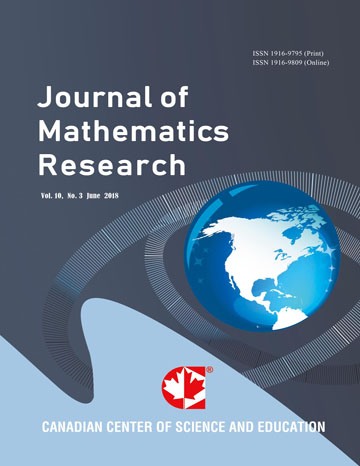Local Complement Metric Dimension of Sierpinski Gasket Graph and Hanoi Graph
- Aditia Permana
- Lucia Ratnasari
- Kartono Kartono
- Siti Khabibah
- Robertus Heri Soelistyo Utomo
Abstract
One of the topics in graph theory that has attracted the attention of many researchers is the study of metric dimension. The metric dimension is a key concept in graph theory with wide-ranging applications in areas such as optimization, image processing, routing, and biological analysis. The metric dimension refers to finding the minimum set of marker vertices that uniquely distinguish every vertex in a graph from one another. For a connected graph $G$, a nonempty set $W \subseteq V(G)$ is a local complement resolving set if there exist adjacent vertices $u,v \in V(G)$ such that $r(u \mid W) = r(v \mid W)$. The largest such set is the local complement basis, and its size is the local complement metric dimension denoted by $\overline{\dim_l}(S_n)$. In this paper, we focus on the local complement metric dimension of two families of recursively defined graphs: the Sierpinski Gasket graph $S_n$ and the Hanoi graph $H_n$. We prove that for $n \geq 3$, $\overline{\dim_l}(S_n) = 2 + \sum_{k=3}^{n} \lvert V(S_k^2) \rvert$, and for $n \geq 2$, $\overline{\dim_l}(H_n) = 2 + \sum_{k=2}^{n} \lvert V(H_k^2) \rvert$.
These results indicate that the recursive structures of the Sierpinski Gasket and Hanoi graphs play a crucial role in determining their local complement metric dimensions.
- Full Text:
 PDF
PDF
- DOI:10.5539/jmr.v17n3p36
Index
- ACNP
- Aerospace Database
- BASE (Bielefeld Academic Search Engine)
- Civil Engineering Abstracts
- CNKI Scholar
- DTU Library
- EconPapers
- Elektronische Zeitschriftenbibliothek (EZB)
- EuroPub Database
- Google Scholar
- Harvard Library
- IDEAS
- Infotrieve
- JournalTOCs
- MathGuide
- MathSciNet
- Open policy finder
- RePEc
- ResearchGate
- Scilit
- Technische Informationsbibliothek (TIB)
- The Keepers Registry
- UCR Library
- Universe Digital Library
- WorldCat
Contact
- Sophia WangEditorial Assistant
- jmr@ccsenet.org
